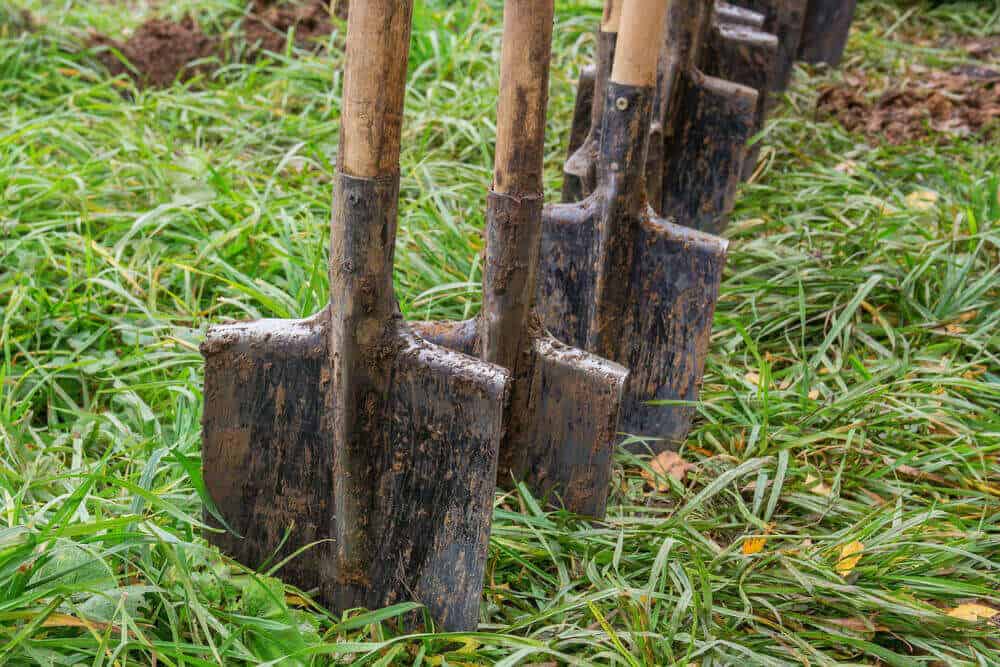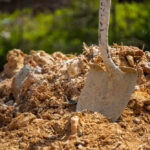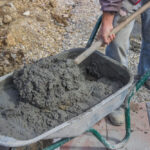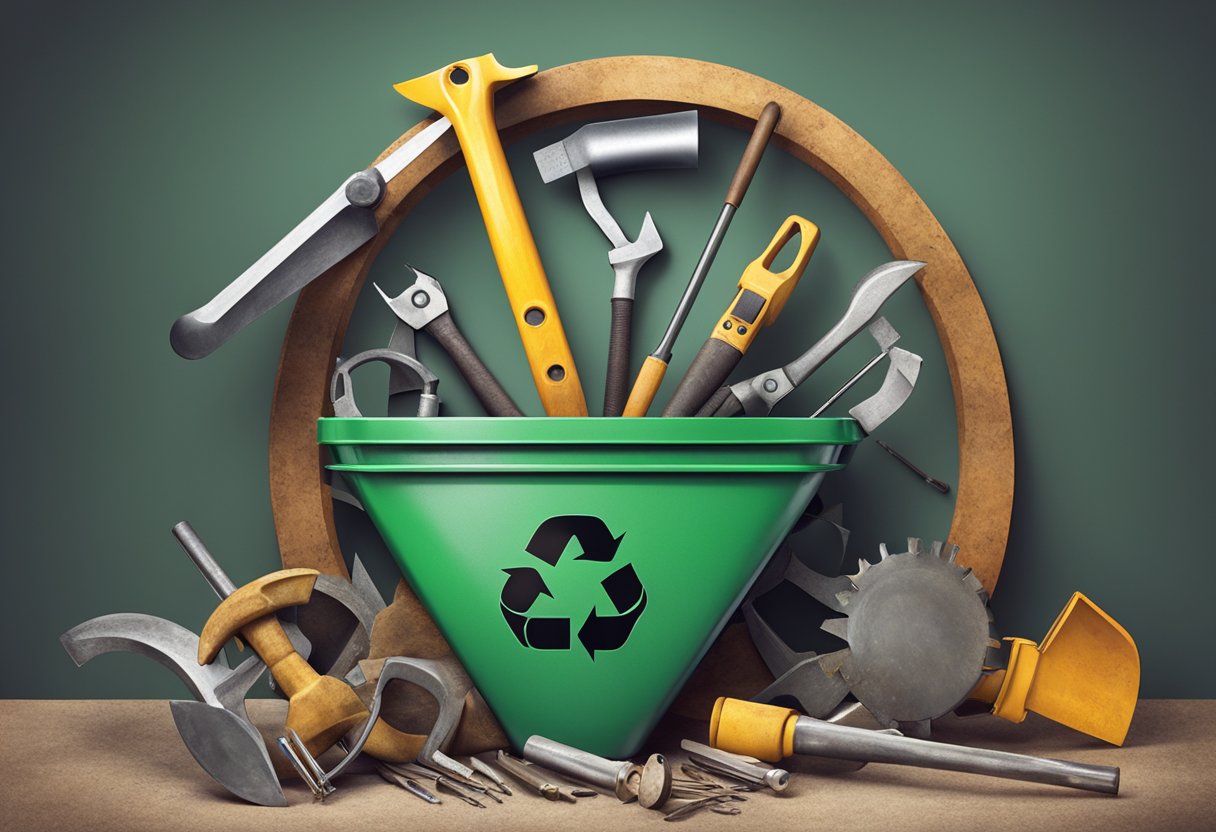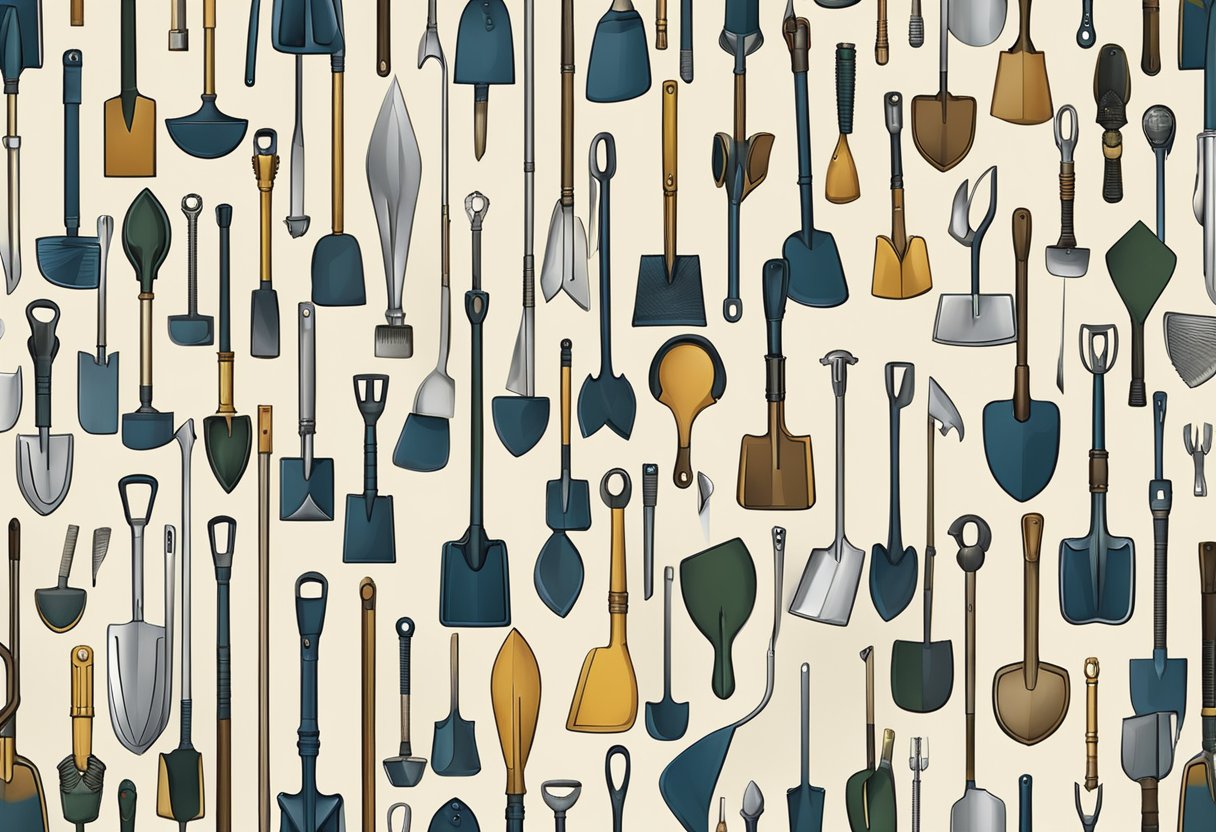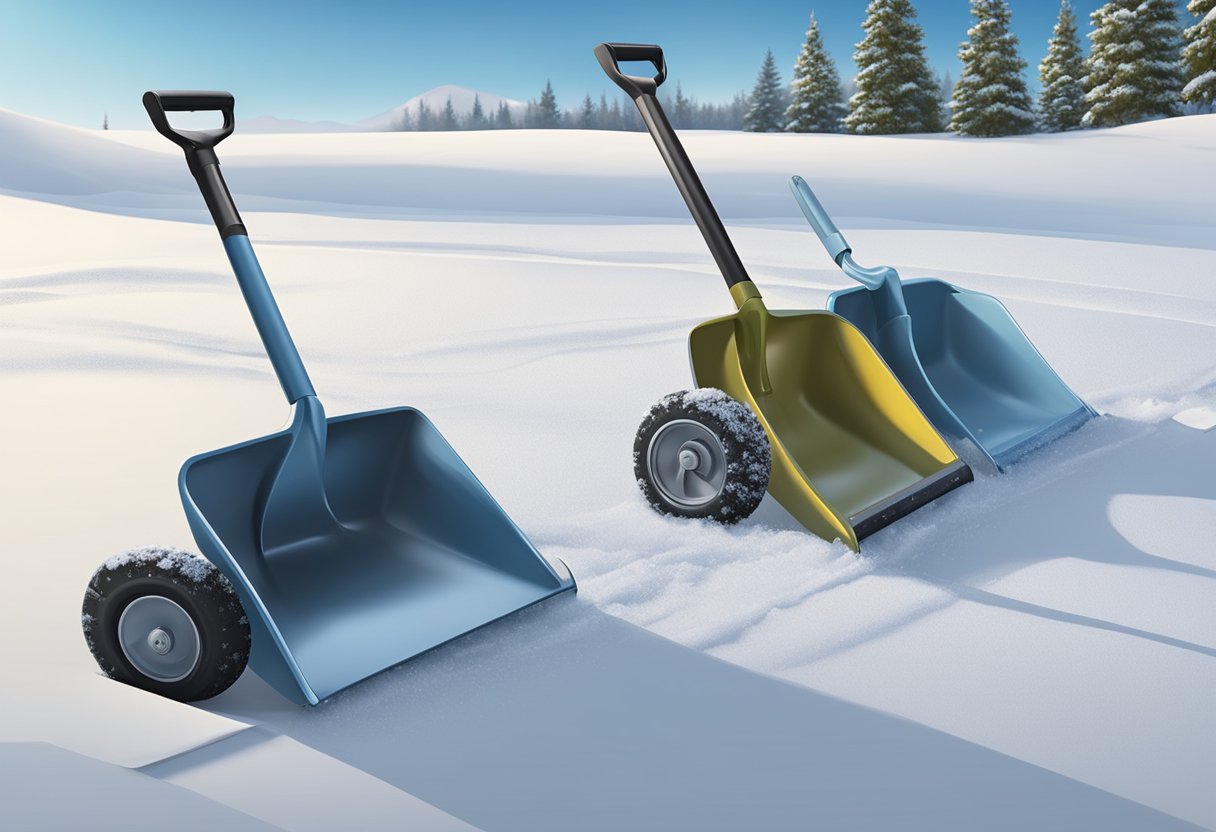Shovels are essential tools for any gardener or landscaper. They come in various shapes and sizes, and each shovels type is designed for a specific use, from digging holes to moving soil and rocks, shovels are versatile tools that can help make any outdoor job easier.
Table of Contents
Shovel Types And Uses
When choosing a shovel, there are a few things to consider. The first is the type of shovel you need. There are digging shovels, spade shovels, transfer shovels, and trenching shovels, to name a few. Each shovel has its unique design and purpose and comes in various shapes and sizes. Here are five common types of shovels:
Round Point Shovel
The round point shovel, also known as a digging shovel, is the most common type. It has a pointed blade ideal for digging holes, planting trees, and moving soil. The blade is typically steel, and the handle is wood or fibreglass.
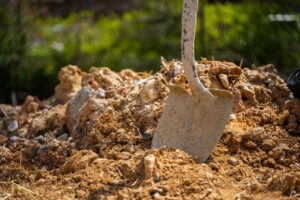
Square Point Shovel
The square point shovel, or a transfer shovel, has a flat, squared-off blade ideal for moving materials such as gravel, sand, and dirt and helps dig shallow trenches and sod. The blade is steel, and the handle is wood or fibreglass. A square point shovel is a must have tool for any gardener or landscaper.
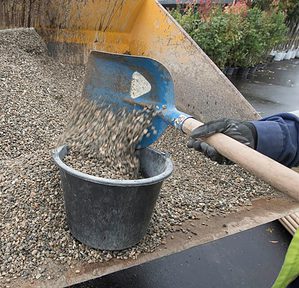
Garden Shovel
The garden shovel, also known as a hand trowel, is a small shovel with a pointed blade ideal for working in tight spaces, such as planting bulbs or digging weeds. Like most shovels, the blade is steel, but the handle will be wood or plastic.
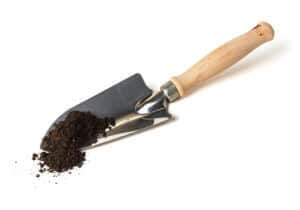
Trenching Shovel
The trenching shovel, also known as a ditching shovel, has a long, narrow blade ideal for digging trenches for pipes, cables, or irrigation lines. A trenching shovel is a specialized tool that is essential for any construction project.
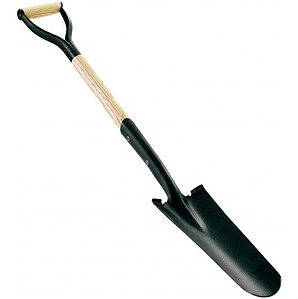
Scoop Shovel
The scoop shovel, also known as a snow shovel, has a wide, curved blade ideal for moving gravel or other loose materials.
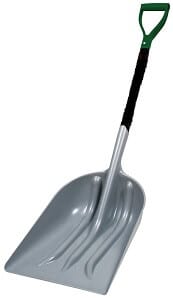
Shovel Materials
The most important factor when choosing a shovel is the shovel’s material. Different materials have different strengths and weaknesses, affecting their durability, weight, and cost. Here are the most common materials used for shovel construction:
Steel Shovels
Steel shovels are known for their strength and durability. As a result, they are often the go-to choice for heavy-duty jobs like digging through hard soil or breaking up concrete. Steel shovels are also relatively inexpensive compared to other materials. However, they can be pretty heavy, making them tiring to use for extended periods. Additionally, steel shovels are prone to rusting, which can shorten their lifespan.
Aluminum Shovels
Aluminum shovels are lightweight and ideal for lighter jobs like moving loose soil or mulch. They are also rust resistant, making them a good choice for use in wet conditions. However, aluminum shovels are less durable than steel shovels and can bend or break under heavy use. They are also more expensive than steel shovels.
Fibreglass Shovels
Fibreglass shovels are a popular choice for their strength and lightweight combination. They resist rust and can withstand heavy use without bending or breaking. Fibreglass shovels are also more comfortable for the user than steel shovels because they absorb shock better. However, they can be more expensive than steel shovels.
Shovel Features
Handle Length
The length of the handle is an important feature to consider when choosing a shovel. Longer handles provide more leverage and are ideal for digging deeper holes or moving heavier loads. Shorter handles are better for working in tight spaces or when a lighter tool is needed. When choosing a handle length, consider your height and the type of work you will do.
Blade Size and Shape
The size and shape of the blade are also essential features to consider when choosing a shovel, as the shape of the blade will affect its performance. For example, a pointed blade is ideal for digging in hard soil, while a round blade is better for scooping and moving loose material. Likewise, a wider blade will allow you to move more material, while a narrower blade is better for precision work.
Grip Type
The grip on a shovel can make a big difference in how comfortable it is, so look for an ergonomically designed grip to reduce strain on your hands and wrists. Rubberized grips are popular because they provide a comfortable, non-slip surface. Some shovels also feature adjustable grips that can move up or down to accommodate different heights and hand placements. Our guide 4 Types of Shovel Handles And The Benefits of Each goes into further depth on shovel handles
Weight
The weight of a shovel can affect how easy it is to use. A heavier shovel will provide more power and durability but may be more challenging to lift and maneuver. A lighter shovel will be easier to use but may need to be more robust and durable for your task. Consider the type of work you will be doing and your strength and ability when choosing a shovel based on weight.
Maintenance and Care
Cleaning
Proper cleaning is essential to keep your shovel in good condition. Follow these simple steps:
- Hose off the shovel after each use to remove dirt and debris.
- If necessary, use a stiff bristle brush to remove stubborn dirt.
- Dry the shovel with a rag after washing it and store it away in a dry location, or it may rust.
- Rub a small amount of mechanical lubricant on the wooden handle to protect it and reduce the chances of splinters forming. Alternatively, you can use a wood sealer to protect and give it an aesthetically pleasing finish.
Sharpening
Sharpening your shovel when the edge is dull will enhance the use of your shovel and extend its lifespan. A basic and straightforward method to sharpen your shovel:
- Wipe the blades down with a lubricant.
- File the edge with a metal file at a 20 to 45 degree angle. Be sure to file along the original bevel of the blade.
- Use a honing stone or sandpaper to remove any burrs on the blade.
- Finally, wipe the blade with a clean rag to remove metal filings.
Storage
Proper storage can help prevent damage to your shovel and prolong its lifespan. Here are some tips:
- Store your shovel in a dry place to prevent rust.
- Hang your shovel to keep it off the ground and prevent the blade from becoming dull or damaged.
- If you don’t have space to hang your shovel, store it with the blade facing up to prevent it from becoming dull or damaged.
Final Thoughts
There are many types of shovels available, each with their own features and benefits. Handle length, blade size and shape, grip type, weight and proper maintenance all play a role in selecting the right shovel for your task. Consider these features when choosing a shovel to ensure you have the best tool for the job. With proper use and care, your shovel can last for years.

